Various problems related to health, skin, weight, well-being sooner or later make a person think about proper nutrition. Proper nutrition is not always a strict diet, not the absence of sweets in the diet, not self-depletion. This is a way of life that needs to be approached consciously.
healthy food- this is the basis on which the general healthy and strong state of the body, excellent mood, external attractiveness and performance are built.
Principles of proper nutrition
Proper nutrition is based on the following principles:
- Dietary diversity. You don't need to eat only kefir and cucumbers to lose weight! The menu should be tasty, healthy and diverse.
- Power part. Daily calorie intake should be divided into three main meals and one or two snacks. Breakfast - 30%, lunch - 35%, dinner - 25%, two snacks - 10%. There are cases where a person is prescribed to eat strictly three times a day, for example, with a violation of carbohydrate metabolism, insulin resistance. And in some cases, such as tired adrenal syndrome, you need to eat five times a day, fasting will do more harm than good.
- Most of the menu should consist of natural products, without artificial additives, sugar and sweeteners.
At the same time, the diet should be in accordance with the norms of calories, protein, fat, and carbohydrates, if you have the task of regulating your weight along with the transition to proper nutrition.
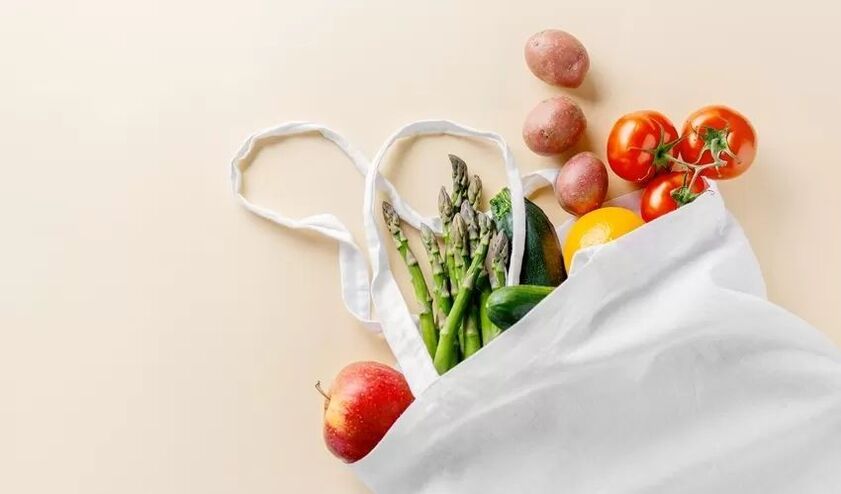
Here are a few more principles that will help you change your diet for the better.:
- drink enough (at least 2 liters per day) clean water;
- eat when you start to feel hungry - it is very important to eat when you are completely hungry, preferably without snacks, ideally - three times a day to prevent insulin resistance;
- chew each bite well, even more, eat slowly, consciously, chew the edge with a fork;
- eating in a quiet state;
- pay attention to the process while eating;
- eat sitting down, preferably with both feet on the floor;
- move actively during the day - at least 10, 000 steps per day were not canceled;
- eat freshly prepared food;
- eat more fiber - fresh fruits and vegetables;
- Eat fish at least 2 times a week to get omega 3 fatty acids from food.
How to start the transition to proper nutrition
The transition to a new type of nutrition consists of five stages:
- Eliminate foods that do not benefit the bodycontains so-called "empty calories". These are pastries, confectionery, sweets, sausages and semi-finished products, mayonnaise, sauces.
- Eliminate alcohol. Some studies show that such drinks affect the neurons in the brain that are responsible for appetite. The more a person drinks, the more he eats. Also, the intake of alcoholic beverages is often accompanied by various snacks and snacks, which is very undesirable.
- Monitor water balance. You need to drink at least 1. 5 liters of clean water every day. The approximate ratio is calculated by the formula: 30 milliliters per kilogram of ideal weight.
- Organize a diet. As already mentioned, it is necessary to divide the daily calorie content into several meals. Set a time that works best for everyone and stick to it. The schedule should be approximately the same for all days.
- Gain strength and patience. Transitioning to a new lifestyle can be difficult.
In fact, the process of changing habits is extremely complex. Ordinary advice will not help. Do not read weight loss reviews on the Internet about magic diets. In fact, only two percent of people can lose weight at home without harming their health. In all other cases, qualified help of weight loss specialists is required. These are nutritionists, psychologists and personal consultants.
List of products for proper nutrition
When making a healthy eating plan, do not forget to include the following products in the menu:
- Sea fish and seafood. Fish oil reduces the risk of cholesterol plaques, heart attack and stroke. The presence of fish in the diet improves the condition of hair and nails. Omega 3 fatty acids are structural components of cell membranes. They are necessary for the plasticity and fluidity of cell membranes. When there is a deficiency of omega-3 fatty acids, the cardiovascular system and the brain are the first to suffer, because they need DHA acids the most (the highest concentration of DHA is in the brain, especially in the gray matter). The lack of plasticity of the cell membranes of the brain causes a decrease in human cognitive ability and psycho-emotional disorders.
- Egg. Prevents stomach ulcers, pancreatitis and disorders of the nervous system. Eggs are an excellent source of easily digestible protein, and we need protein for many body systems to function—it's the building block of body cells, as well as the basis of the immune and enzymatic systems.
- Berry. Any berry slows down the aging process in the body. They should be on the table of those suffering from diabetes and overweight. Berries are also an excellent source of antioxidants that inhibit lipid oxidation. Antioxidants are abundant in fresh berries such as sea buckthorn, blueberries, grapes, cranberries, mountain ash, currants, and pomegranates.
- Legumes. They perfectly satisfy hunger, provide the necessary energy, and improve the digestion process. Remember that all legumes must be soaked before eating.
- Whole grains. Bread and pasta made from whole wheat varieties saturate the body with "right" carbohydrates that are safe for the figure. Meals made from bran flour prevent obesity, heart diseases and diabetes.
- Dairy products. Those who fear getting better should choose low-fat dairy products without added sugar.
- Vegetables. They should be on the desk of any dieter. Orange and red vegetables are considered especially useful.
- Olive oil. It removes toxins from the body, lowers cholesterol, and maintains the health of the liver.
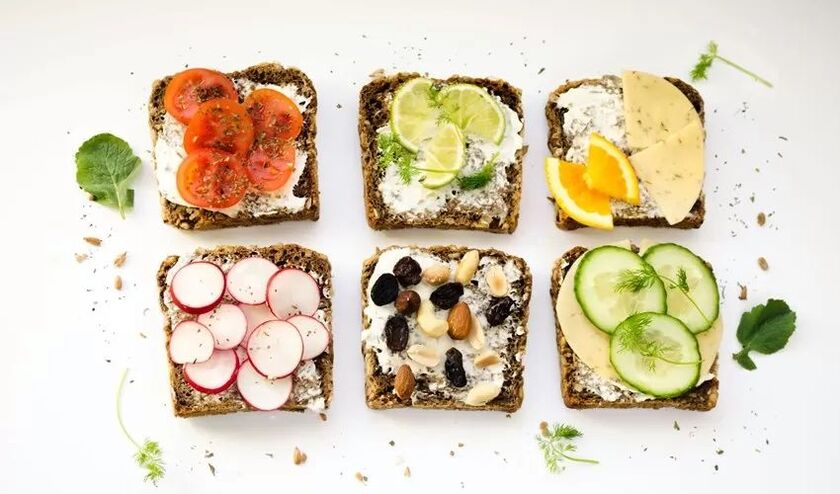
What foods to avoid
Some foods contradict the principles of healthy eating. It is necessary to remove them from the diet or minimize their use.These include:
- He bought canned food. To preserve meat, fish, vegetables and legumes for a long time, manufacturers add dyes and preservatives, a lot of salt, and vinegar to them. Home canning should be preferred, but you shouldn't even bother with it.
- Mayonnaise-based sauces. Cheese, garlic, spicy and other sauces that are loved by many are made with mayonnaise. This dressing does no good to the bowl.
- Smoked meats. A lot of salt is added when smoking meat and fish. Taking such foods burdens the kidneys.
- fried foods. Often they are cooked using low-quality oil, which leads to excess weight.
- Sweet carbonated drinks. They contain a lot of sugar, which accumulates in the body in the form of extra pounds.
- Sweets. They are called "fast" carbohydrates. If not consumed immediately, they will become overweight.
How to prepare a proper nutrition menu, what should be paid attention to
To prepare a diet of proper nutrition, it is necessary to take into account all your characteristics. There is no universal menu, just as there are not the same people. For example, the standard menu will not suit a person with gluten intolerance because it contains. First of all, you need to determine what restrictions individual diseases can impose, and adjust the menu for you personally, following them. It is recommended to consult a doctor or nutritionist.
calories- this is the amount of energy generated during the breakdown and processing of food. It varies from 1800 to 3000 kcal per day, depending on age, lifestyle, and metabolic rate.
If you lead an active lifestyle and do a lot of sports, then your menu will be higher in calories than the average person due to protein foods - to maintain active muscle growth and a fast metabolism.
With a sedentary lifestyle, on the contrary, you need to reduce the proportion of carbohydrates and unhealthy fats in order not to gain excess weight, because the excess calories consumed are not burned.
Approximate ratio of ingredients per day:
- Proteins - 25-35%
- Fats - 25-35%
- Carbohydrates - 30-50%
Proteins are high molecular weight nitrogen-containing substances composed of amino acid residues linked by peptide bonds.
According to their origin, proteins can be divided into animal and plant origin. Animal protein sources include all meat products, fish, eggs, and fatty cheeses. Plant proteins are found in leafy greens, vegetables, algae, legumes, nuts and seeds.
General recommendations for protein intake- 1-2 g / kg of weight. That is, if you weigh about 60 kg, you need 60-90 grams of protein, half of which should come from vegetable protein.
Also an important point - an excess of protein in the diet can lead to very sad consequences - it is a huge burden on the liver, kidneys and detoxification system as a whole.
Oilsare organic compounds consisting of esters of glycerol and fatty acids. Fats are vital for us, especially women. As always, if we diet, we first reduce the consumption of fats.
Fats are divided into saturated and unsaturated, which in turn are divided into monounsaturated and polyunsaturated. Saturated fats include all animal fats, butter and coconut oil. Unsaturated fats are all vegetable oils, avocados, nuts, olives, seeds, fish and seafood.
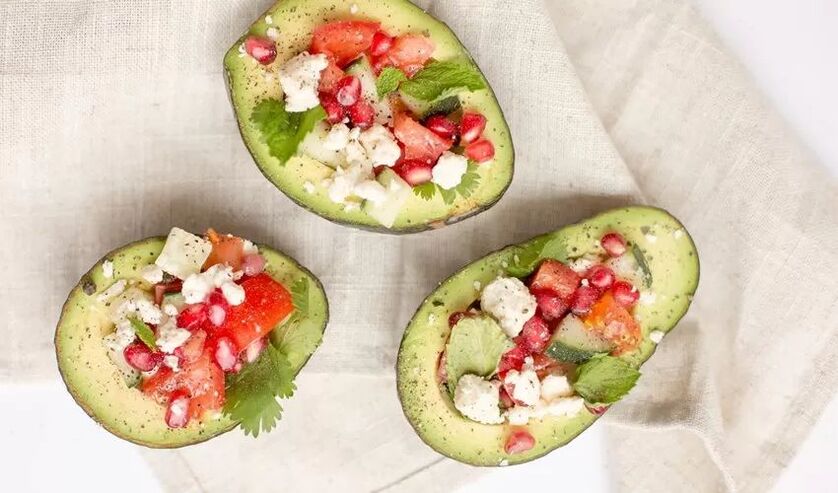
It is important to monitor the ratio of saturated and unsaturated fats, because usually the preference tends to the first, although the opposite is better, since it is unsaturated fats that form the basis of all cell membranes.
The fat norm for adults is 1. 5-2 g/kg.
When eating fats, keep in mind the ratio of Omega 3 to Omega 6, which should ideally be 5: 1. This means that there should be more Omega 3 fatty acids in the diet. Western diets lack omega 3 fatty acids and have excessive amounts of omega 6 fatty acids compared to the diet on which humans evolved and their genetic patterns were built. Excess omega-6 polyunsaturated fatty acids (PUFAs) and the very high omega-6/omega-3 ratios in today's Western diets contribute to the pathogenesis of many diseases, including cardiovascular disease, cancer, inflammation, and autoimmune diseases. high levels. has an inhibitory effect.
Carbohydratesare inorganic compounds containing carbon (C) and hydroxyl groups (OH). Carbohydrates serve as the main substrate for energy production in our body. Also, carbohydrates are the most important participants in digestion, they stimulate the work of the large intestine.
Carbohydrates can be divided into simple and complex. Simple carbohydrates are white crystals that dissolve in water and taste sweet. They have a high glycemic index and significantly increase blood glucose levels. These include all products made from white flour, pasta, preserves, jams, honey, sugar and some dairy products. Complex carbohydrates, in turn, have a mechanical effect on the intestines and do not cause such a significant increase in insulin and blood glucose. Sources of complex carbohydrates are cereals, vegetables, fruits, berries and legumes.
The norm of carbohydrate intake is 3-5 g / kg of weight. With moderate and high physical activity, the need can increase up to 7 g / kg of body weight.
Below are examples of the average daily diet for a child, a woman and a man. In each case, you should adjust for your activity level and your own taste. Everyone should avoid large amounts of sugar, soda, flour, ready meals and fast food. It is necessary to eat fractions up to 4-5 times a day and take the main amount of food in 1 half of the day.
Women
On average, a woman needs to eat about 1800 - 2000 kcal. Fair sex has a slower metabolism than men, so they gain weight faster. At the same time, the growth of muscle mass is difficult, unlike men.
During pregnancy, another creature is actively growing, and in a sense it really needs "two meals". The caloric content of the diet for a pregnant woman should be between 2500 and 3500 kcal, so that there is enough food for the growth of the child and further breastfeeding. Otherwise, the embryo "takes" what it needs from the mother's body, destroys the teeth and reduces its overall weight.
Men
Men have a more active metabolism, naturally have more muscle tissue, which requires active nutrition with protein foods. On average, a man eats about 2000 - 2900 kcal per day. Food calories increase especially during youth, during muscle development and rapid growth.
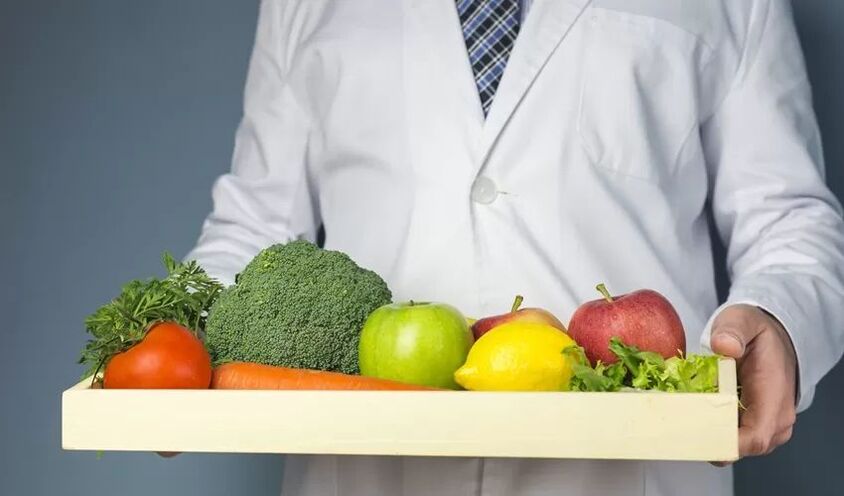
Children
Throughout life, a person grows so actively and develops only in childhood. Therefore, the calorie content of the child's food should increase approximately every six months. When training in sports sections, the coach will help adjust the norm, taking into account the loads, and if the child is prone to obesity or underweight, the pediatrician and nutritionist will help. Each age has its own norm depending on the current need. After 12-13 years, the calculation is almost the same as for adults, taking into account active sexual development.
It is also necessary to properly distribute proteins, fats and carbohydrates during the day.The main distribution rules are as follows:
- Breakfast- complex carbohydrates. The optimal solution is to take cereals. But remember that breakfast should include complex carbohydrates as well as proteins and fats for a balanced diet. Porridge can be supplemented with oils, you can also eat one or two eggs.
- Suppercomplex carbohydrates, white meat and vegetables. Perfect for stew with salad.
- Supper- poultry, fish, eggs. Reduce the amount of carbohydrates consumed in the evening by adding more protein. Carbohydrates are needed for energy, and proteins are needed for cell and tissue regeneration.
- Eliminate its usefast carbohydratesAfter 16. 00.
- Include snacks, if it is difficult to withstand gaps between main dishes, preferably fat.
Menu planning for proper nutrition
Try to make the right menu yourself. Feel free to include what you love in your diet, remember only moderate amounts of food in portions, as well as the correct ratio of BJU. To do this, you can use ready-made menu examples that are widely and variously presented on the Internet.
Breakfast
Try not to skip your breakfast. It plays an important role in good health throughout the day.
Sample breakfast menu:
- Porridge + fruit or nuts + honey.
- Omelet + cheese + rye bread.
- Cottage cheese + fruits + honey.
- Oatmeal.
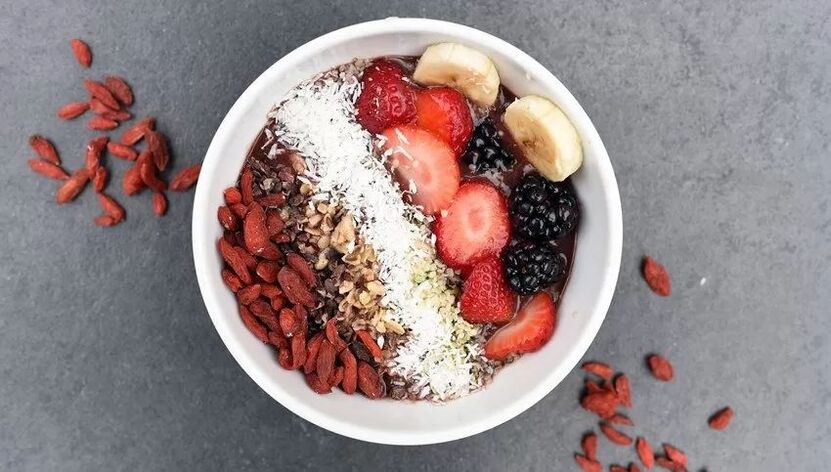
Supper
Lunch is traditionally the main part of the daily diet in Russia. By skipping lunch, you can provoke an increased feeling of hunger in the evening, then it will be difficult to eliminate overeating.
Sample lunch menu:
- Meat, fish + side dish + vegetables.
- Vegetable soup + meat, fish.
- Cooked vegetables + meat, fish.
Mandatory components of a healthy lunch are complex carbohydrates and proteins.
Supper
It is generally accepted that a full dinner should be no later than 2-3 hours before bedtime. However, skipping dinner can affect sleep and cause increased hunger.
Sample lunch menu:
- Chicken, fish + vegetables.
- Vegetable salad + egg.
- Vegetable stew.
- Vegetable salad with quinoa or other grains.
Snacks
If you struggle with three clean meals a day, you can and should add snacks. Fatty snacks like nuts are best.
Recipes for proper nutrition
In order for proper nutrition to easily enter life and become an integral part of it, it is necessary to pay attention to the diversity of the diet. You can get a recipe book with photos and step-by-step instructions. Recipes are on thematic sites. Here are some interesting options.
Protein pancakes
The fastest breakfast is protein or protein pancakes. Even a novice cook can cook them.
Ingredients:
- dry protein mixture for baking - 100 grams;
- any milk - 100 milliliters;
- sugar substitute or berry syrup;
- any fruit or berry for decoration, service.
Mix the ingredients until smooth. Cook pancakes in a dry pan without adding oil.
Cottage cheese dessert with fruit and gelatin
The favorite dessert of schoolchildren is fruit curd. It will be able to replace sweets, various confectionery, pastries. It is very easy to prepare and does not even need to be cooked in the oven.
Ingredients:
- fat-free cottage cheese - 200 grams;
- low-calorie sour cream or Greek yogurt - 100 grams;
- sugar substitute or honey to taste;
- a spoonful of lemon juice;
- a bag (15 grams) of gelatin;
- 100 milliliters of water;
- any fruit.
Dissolve a bag of gelatin in water, leave to swell. Mix cottage cheese, sour cream, sugar substitute until a homogeneous mixture. You can beat it with a mixer or blender. Place the bottom of the bowl with the fruit, the top - the curd layer, and the berries. Put in the refrigerator for an hour.
Cheesecakes with bran and banana
Another simple recipe for beginners is light, cheap, simple cheesecakes with bananas and bran.
Ingredients:
- fat-free cottage cheese - 300 grams;
- one chicken egg (only protein can be put);
- bananas;
- whole grain flour - 3 tablespoons;
- bran - 2 tablespoons;
- a pinch of salt;
- sweetener to taste.
Mix all the ingredients and cook in a dry pan without adding oil. Flour can be replaced with oatmeal in a coffee machine.
radish salad
A simple and quick dinner recipe for cooks who are new to proper nutrition.

Ingredients:
- radish - 150-200 grams;
- mixture of lettuce leaves - 100 grams;
- one small carrot;
- a bunch of green onions;
- three cloves of garlic;
- salt to taste;
- vegetable oil for dressing.
Finely chop vegetables and greens, mix with vegetable oil, rubbed garlic in a fine frying pan.
beet salad
The simplest, tastiest salad familiar from childhood is beetroot.
Ingredients:
- boiled beets - one small;
- two or three chopped garlic;
- three spoons of sour cream or Greek yogurt;
- salt.
Mix all the ingredients. Serve with parsley.
Salad with tuna
A good dinner option is salad with tuna.
Ingredients:
- canned tuna in its own juice - one can;
- cherry tomatoes - 7-8 pieces;
- two chicken eggs;
- a cucumber;
- a light bulb;
- a mixture of lettuce leaves;
- olive oil for dressing;
- a little lemon juice;
- salt.
Cut the ingredients, mix, season with lemon juice and olive oil.
Vegetable soup with chicken
Especially soups should be included in the diet of schoolchildren and students. One of the simplest recipes is chicken with vegetables.
Ingredients:
- two small potatoes;
- a light bulb;
- a carrot;
- bell pepper;
- tomatoes;
- chicken fillet.
Cut the chicken into cubes and boil. Add vegetables and salt to the broth, cook until tender. When serving, you can decorate with herbs.
carrot soup
Carrot soup takes the leading position in the ranking of the TOP most interesting dishes for proper nutrition. Most people are skeptical about it. It is believed that such food cannot be tasty. But once they make carrot soup correctly, many people include it in their diet.
Ingredients:
- three large carrots;
- two potatoes;
- a spoonful of butter;
- a light bulb;
- three cups of chicken broth or water;
- salt, spices (curry, ginger, cardamom).
Boil the vegetables until cooked. Add broth, oil, spices and beat in a blender until pureed.
Creamy Brussels Sprout Soup
This soup can be cooked in the oven or in a slow cooker.
Ingredients:
- chicken broth - liter;
- Brussels sprouts - 300 grams;
- a carrot;
- leek - half root;
- onion - one piece;
- two tablespoons of butter;
- two or three potatoes;
- 100 milliliters of cream;
- one egg;
- salt, ground black pepper, nutmeg, bay leaf.
Boil the vegetables until cooked. Beat in a blender until smooth, add broth, cream, oil, spices.
Tomato soup
You can quickly cook tomato soup for dinner. This is a delicious, unusual, but simple and healthy dish.
Ingredients:
- tomatoes - 1 kilogram;
- onion;
- a few cloves of garlic;
- cream - 100 milliliters;
- two tablespoons of olive oil;
- salt, oregano, basil.
Boil the tomatoes with boiling water, remove the peel and cook over low heat, adding onions. After obtaining a uniform consistency, add oil, spices, salt.
Easy Braised Cabbage Recipe
You can cook cabbage in a pot, in a slow cooker or in a regular frying pan. This simple dish can be a good dinner or side dish for lunch.
Ingredients:
- white cabbage - 500 grams;
- small bulb;
- root;
- two tablespoons of vegetable oil;
- salt, black pepper.
Finely chop the onion and cabbage, grate the carrot. Cook in a pan with oil and water until cooked.
Chicken cooked with vegetables
The perfect dinner is chicken cooked with vegetables.

Ingredients:
- chicken fillet;
- bell pepper;
- tomatoes;
- onion;
- root;
- potato;
- two spoons of vegetable oil or low-fat sour cream.
Cut vegetables and meat into pieces, put in a mold, add oil or sour cream. Bake in the oven until done, about 30-40 minutes.
Chicken fillet in mustard sauce
This option is well suited not only for everyday dinners, but also for a holiday party.
Ingredients:
- chicken fillet - 500 grams;
- a carrot and onion;
- three tablespoons of low-fat sour cream;
- two tablespoons;
- two teaspoons of flour;
- a glass of boiling water;
- a little vegetable oil.
Marinate the meat in sour cream and mustard in advance, leave for an hour and a half. Fry carrots and onions in a pan, add meat and boiling water. Boil until done.
Pumpkin stew
An interesting option for lunch or dinner is pumpkin stew.
Ingredients:
- vegetable marrow;
- a light bulb;
- one bell pepper;
- tomatoes;
- two or three eggs;
- 200 milliliters of kefir or low-fat sour cream;
- a little low-fat cheese;
- salt, pepper, herbs to taste.
Cut the vegetables into thin strips. Spread it with sour cream or kefir and put it in layers. Bake in the oven for 40-50 minutes. Sprinkle with cheese and herbs before serving.
Diet pilaf with chicken
Plov is usually cooked with pork. It turns out quite oily and heavy. A healthy but no less tasty alternative is chicken.
Ingredients:
- chicken fillet;
- root;
- onion;
- rice (polished or brown) - a glass;
- water - two glasses;
- two tablespoons of vegetable oil.
Cut the chicken breast into cubes, fry it with onions and carrots on low heat. Pour a cup of rice, pour water and boil until tender.
Proper nutrition is not only a beautiful figure, but also a tasty, healthy, varied diet that gives good health and well-being.






























